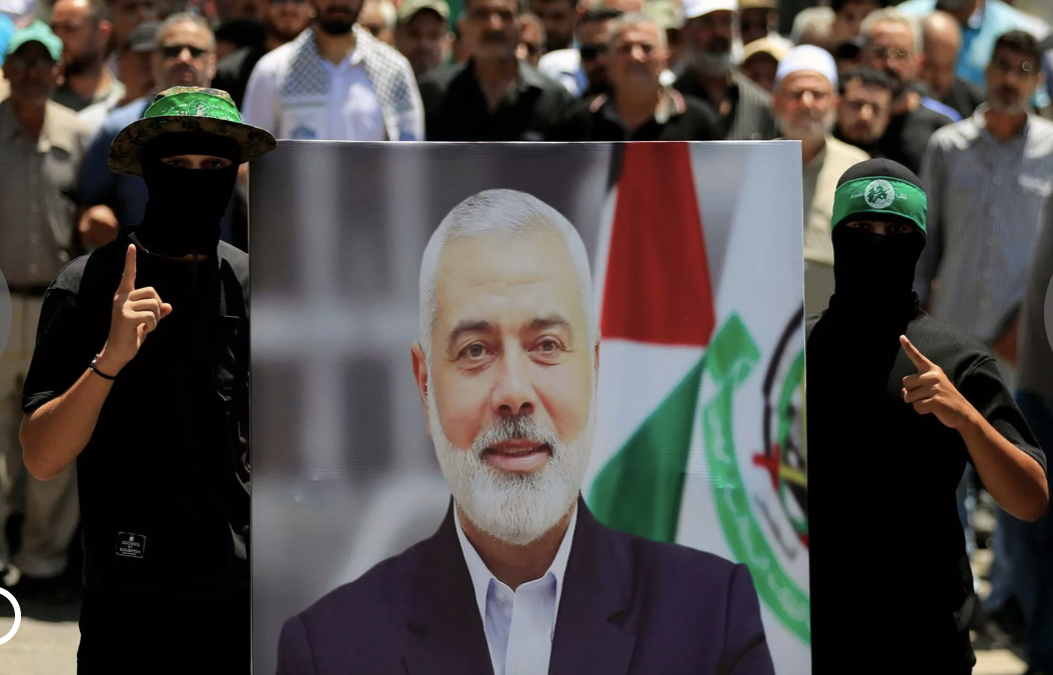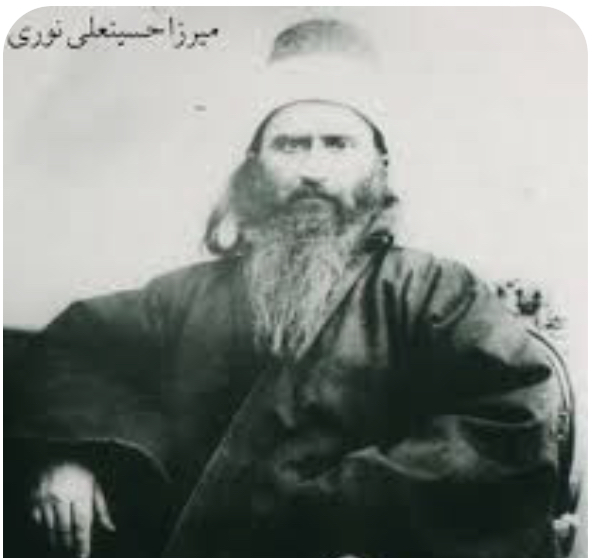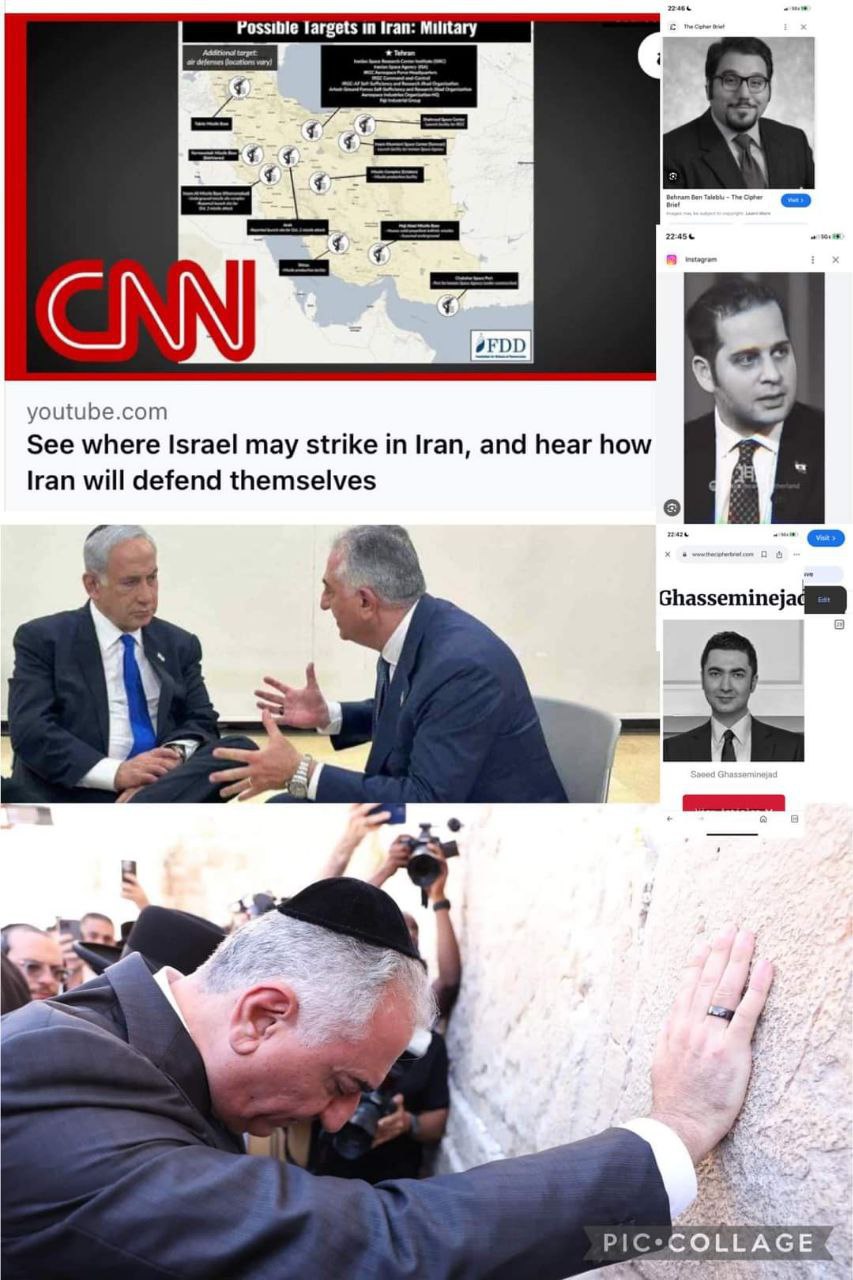The constant silence of the Baha’i community in the face of terrorist acts It should be said that those who are terrorists themselves, it is surprising if they condemn terror. The deviant Baha’i sect cannot call for public peace when, from the beginning until now, it has either physically eliminated or personally assassinated its critics. The leaders of the sect, Hossein Ali Nouri (Baha), Abbas Effendi (Abd al-Baha) and Shoghi Effendi, were personally involved in riots, assassinations and murders against the people and the country and their critics and the Baha’i Zionist sect. He was exiled to Baghdad during the assassination of Nasir al-Din Shah Hussain Ali, he was a Babi at that time. Hossein Ali used terror to physically eliminate people, even his own brother (Mirza Yahya Sobh Azal) to the point where Faridun Adamit called the organization that Mirza Hossein Ali (Bahá) established on the bed of Babigri, the device of “Mir Ghabbi and Homicide” . One of the first murders that Baha’u’llah ordered was the murder of Mirza Asadullah Dayan, the writer of Bayan and other writings of Ali Muhammad Shirazi (Bab). Because he was aware of the hidden and open secrets of this Zionist sect. Mirza Agha Khan Kermani (Babi Azli and son-in-law of Mirza Yahya Sobh Azal) writes in his Hasht Behesht treatise: “Mirza Hossein Ali found Mirza Asadullah Dayan to be a nuisance, so Mirza Muhammad Mazandarani sent his servant to kill him.” Of course, in this treatise, he reveals the crimes of the Baha’is in detail. Regarding the murder and violence of the Baha’i organizations, Aiti writes: “Abbas Effendi constantly pursued this practice of his father, that is, he tried to kill and execute his public opponents, who had become forbidden and guilty in the expansion, and who had known the secrets and discovered them.” During the period of Shoghi (the third leader of the Baha’is), this method continued until the Baha’i profession stained its hands with blood, which history remembers less than that kind of brutality. The murders committed by Baha’is can be divided into five groups: 1. Political murders. 2. The killing of some Muslim figures whose continued life was harmful to Baha’iism. 3. The killing of Babians who opposed Mirza Hossein Ali Nouri’s regime (mainly the Azalis). 4. It was not expedient to kill the Baha’is who were aware of some secrets or for some reason to continue their lives. 5. The murders took place due to the personal motives of the leaders of the Bahai sect. Political terrorism in Iran’s contemporary history since the mid-1840s, 1260, Qamari began with Babi-Gari and was so connected with it that in the late Qajar era, the name “Babi” and “terrorist” were synonymous. The Babis planned the assassination of Amir Kabir and on 28 Shawwal 1268 AH; On August 15, 1852, they tried to assassinate Naseruddin Shah, which led to the arrest of a group of them. Since then, this practice has continued in Iran, especially during the constitutional revolution and peaked after that. The terrorist activities of the constitutional revolution period and after that are linked with the names of Sardar Mohi (Abdul Hossein Khan Moazal Sultan), Ehsanullah Khan Dostdar, Asadullah Khan Abul Fatehzadeh, Ibrahim Khan Manshizadeh and Mohammad Nazar Khan Mashkatul Mamalek. The secret activities of Asadullah Khan Abulfathzadeh (Brigadier of the Kazakh Army), Ibrahim Khan Manshizadeh (Brigadier of the Kazakh Army) and Mohammad Nazar Khan Mashkatul-Mamalek began in 1323 A.H. with membership in the secret society known as “Bin-al-Talu’in”, whose meetings were held in the house of Ibrahim Hakimi (Hakim-ul-Molk). The next prime minister of the Pahlavi era was held and many of its members were Babi Azli and some Baha’is. From Dhu Qadah 1323 AH, this activity continued with the membership of Asadullah Khan Abulfathzadeh and his brother Saifullah Khan and Ibrahim Khan Manshizadeh in the “Second Secret Society”. Seyyed Mohammad Sadegh Tabatabai (son of Ayatollah Seyyed Mohammad Tabatabai), Nazim-ul-Islam Kermani and Mr. Seyyed Quraysh (members of the house of Seyyed Mohammad Tabatabai) and Sheikh Mahdi (son of Ayatollah Sheikh Fazlollah Nouri) were members of this association. At the same time, the terrorist tendencies of some members of this association were clearly evident. For example, in one of the meetings of the association, the issue of the murder of Ayatollah Seyyed Abdullah Behbahani was raised, which was opposed by Seyyed Mohammad Sadegh Tabatabai. A little later, Arbab Jamshid Jamshidian (a close friend and Muharram of Ardeshir Reporter) became a member of this association. The aforementioned terrorist group finally found its final form and resorted to riotous and divisive operations, like the unsuccessful assassination of Sheikh Fazlullah Nouri (16 Dhul Hijjah 1326 AH). The perpetrator of this assassination was “Karim Dovatgar”, who was arrested. In this regard, other people were also arrested. One of them was Mirza Mohammad Najat Khorasani, a member of the Baha’i sect, who was known for his connections with the British Embassy and as a corrupt personality. Nejat was also a member of the Inter-Eastern Committee. According to Taghizadeh, “Smart”, the representative of the British Embassy, participated in the interrogation sessions of Mohammad Nejat and was careful that “they cannot force Mirza Mohammad. According to Sir George Barclay’s January 15 report to British Foreign Secretary Sir Edward Grey, during these interrogations, Karim Devatgar implied Hossein Qoli Khan Nawab, the brother of British Embassy employee Abbas Qoli Khan, to the assassination. Hussain Qolikhan Nawab was also one of Ardeshir Reporter’s relatives and close friends, the head of the British Indian government’s intelligence network in Iran. On the first of Jumadi al-Thani 1327 AH, Abul Fathzadeh and Manshizadeh, together with Zainul Abdin Khan Mustaanul Molek, formed a new terrorist group called Jahangir Committee. Abul Fatehzadeh, Mostaanul Molk and Mirza Mohammad Nejat were among the members of the “Revolutionary Court” that issued the death sentence of Sheikh Fazullah Nouri. The prosecutor of this court was Sheikh Ibrahim Zanjani, who was under the influence of Mirza Mehdi Khan Ghafari Kashi (Humayun’s minister), a member of the Baha’i sect. In Rajab 1328 A.H., the murder of Ayatollah Seyyed Abdullah Behbahani took place, the perpetrators of which were the affiliates of the terrorist network Abolfathzadeh and Manshizadeh. One of Behbahani’s assailants was a person named Hossein Laleh, who later collaborated with Abul Fathzadeh, Manshizadeh and Meshkatul Mamalek in the Punishment Committee. After this incident, Abolfathzadeh fled to Europe, returned to Iran some time later and was appointed as the tax collector of Savjbalag and Shahryar region and was dismissed shortly after. Abrago incident The incident of Jangdaz “Abragu” is the most obvious example of the hypocrisy of the Baha’i organization that has been preserved in history. Mr. Hossein Khorasani writes in the book Fajai Baha’i: Shoghi from London issued an order for all-round and extensive propaganda of Baha’i in Iran, after receiving this order, the Baha’i organizations in Iran made all their efforts to attract as many people as possible, especially The youth will get what their leader wants. Baha’i community of Yazd, headed by a person named “Sultan Nik Ayin”, chose the village of Abarqo as the target and commissioned Esfand Abad community of Yazd headed by “Mirza Hassan Shamsi” to implement it and requested Tehran community to start propaganda activities. He sent a messenger. With the sending of “Soliman Salimi” as a missionary, the activities began, but no matter what they tried, there was no result, so the propaganda met with serious opposition from the people of the region and failed, and the missionary had to return to Tehran. By designing a new plan to send a missionary, this time a Bahai with the cover of a bicycle-making profession went to Abargu and created a three-person network in Abargu by advertising. Finally, he was also known by the people with the enlightenment of the preacher of Abargu and with his wife. In the middle of the night, he escapes from Abargu on a motorcycle. “Mirza Hasan Shams”, the head of Esfand Abad community in Yazd, was resentful of the people of Abargu, for the third Abar, he assigned another missionary named “Abbas Alipour Mahdi” to go to Abargu and propagate Baha’ism. Taking a huge amount of money as advance payment, Abbas Ali went to Abraqou area with a cocoon cover and as he was on the move, he traveled to the surrounding villages and preached Baha’i faith. In one of the villages around Abarqo, called Rabat, a 56-year-old monotheist woman named Soghari lived with her young children, whom Abbas Alipour Mahdi considered a barrier against the Baha’i organization, and with the reports that he gave to presented, forced the party to issue the order to kill this lady and her innocent children. By the order of the Baha’i community, this family of six was brutally massacred by “Mohammed Ali Shirvani” on the night of the 13th of January 1328. This ruthless Bahai killer along with several of his associates attacked the house of this brave woman and first mutilated her 3 daughters with a shovel and firewood cutting ax and then in another crime he dismembered this woman along with her other two young sons. do A few months after the escape of the criminals, the judicial system of the Pahlavi regime arrests them, and according to Shirvani’s frank confessions, and despite all the efforts of the Baha’i organization to create deviations in it, Shirvani was finally executed in public and the rest of the criminals were imprisoned. And they were released in September 1331 due to the pressure of the American Baha’i organization. But the secrets of this matter remained hidden for a long time until in 2004, the text of the punishment for this massacre was published by Kahan. After the death of Abdu’l-Bahá, with the succession of Shoghi, his granddaughter, Baha’ism underwent serious changes, so that this sect suddenly became a cult. One of the enthusiastic orders issued from London to the Baha’i community was the extensive and comprehensive propaganda of Baha’iism in Iran. Because at that point in time, the godfather of the Baha’i organization – England – was intoxicated by the victory in the Second World War and the urgent need to have information from East Asia and Africa, in order to establish or maintain its colonies, he was eager to send units of the organization as soon as possible. Bahá’í to deploy in these areas to obtain hidden information. In order to implement this order, Iran, which was the original birthplace of Baha’ism, must first be recognized, and then it must be activated as a spy base in other areas of the circles of this profession. In the first stage, Shoghi entered a new phase of de-religiousization of the Iranian people by issuing the order to propagate Baha’iism. After receiving this order, the Baha’i organization in Iran made every effort to reach the leader’s request by attracting as many people as possible, especially the youth. The Yazd Baha’i Congregation, headed by a person named Sultan Nik Ayin, chose the village of Abarqou as its target, and commissioned the Esfandabad Congregation of Yazd, headed by Mirza Hassan Shamsi, to implement it, and requested funds from the Tehran Congregation to start propaganda activities. With the dispatch of Suleiman Salimi as a missionary, the activities began, but no matter what they tried, there was no result, so the propaganda met with serious opposition from the people of the region and failed, and the said missionary had to return to Tehran. In the next step, a new amount was sent to the region. The new missionary chose the bicycle-making profession for cover. In this way, he propagated the Baha’i faith and created a network of three people. Until his activity was revealed by the preacher of the region and he had to leave the region forever with his wife in the middle of the night on a motorcycle. These successive defeats cost Mirza Hassan Shamsi dearly and earned a lot of resentment from the people of the region. Meanwhile, the Yazd congregation, hoping for success, once again sent a fresh-faced missionary named Abbas Alipour Mahdi to the region so that he might be able to create a gap in the religious beliefs of the people. Abbas Alipour Mehdi demanded a huge amount as monthly salary from the organization to fulfill this role, and while agreeing to it, Mehfil paid six months of agreed salary as an advance payment. Abbas Ali, like the previous missionary, entered with the job cover of Pilehvar, and since he was not settled in a fixed place, he could easily travel to the surrounding villages and, while doing propaganda, also get news for the Yazd community. In one of the villages around Abarqo, called Rabat, a 56-year-old monotheist woman named Soghari lived with her young children, whom Abbas Alipour Mahdi considered a barrier against the Baha’i organization, and with the reports that he gave to presented, forced the party to issue the order to kill this lady and her innocent children. On the night of the 13th of January 1328, this horrible crime happened. In this crime, the six-member family of Soghari, by order of the Yazd Baha’i community, was killed in the most heinous manner for the crime of saying “no” to the Satanic propaganda of the Baha’i organization by Ali Muhammad Shirwani Baha’i along with his accomplices, all of whom were unquestioningly obedient to the Baha’i faith. And blood was drawn. Muhammad Ali Shirwani (in the description of this Baha’i life, he had violently killed his son with one kick) and his accomplices, after entering Soghari’s house, first mutilated the three daughters of the family with a shovel and an ax. At this time, the mother wakes up and realizes what is going on, and because she and her two young sons were sleeping in another room, she goes to the back door and tries with all her might to stop these thugs and bloodthirsty executioners from entering the room, but finally Those criminals entered the room and killed the mother along with her two young children in a horrible way with the same shovel and firewood cutting ax. Criminals who see the work of this family terminated to escape from the law! They run away and each of them escapes from the scene of the crime somehow. The next night, Abbas Alipour Mehdi went to Mefell Yazd to receive an agreed fee, and the head of Mefell also convened an extraordinary meeting to present Pour Mehedi’s report, and after hearing the report, he paid his salary and that of his other partners. A few months later, the accused criminals along with nine members of Baha’i community of Yazd and three members of Esfand Abad village, who were among the main leaders, were arrested by the judicial system of the Pahlavi regime and handed over to the law. Although the Baha’i organization did its best to create a deviation in the legal process of the case, but with the presence of Muslim and believers, the deviation of the case was prevented to some extent. It is interesting that after the arrest of Mohammad Ali Shirvani, he admitted in his interrogations that Soghari Khanom was oppressed and a hard worker, and said: “Poor Soghari, what a good woman she was, she was the best women in the world, she used to bake bread for us, and Sometimes he washes our clothes.” But since the regime did not expect this crime to be revealed, and on the one hand, due to the attention of the public opinion on this crime at the country level, it was not able to deny it either, it was only able to reduce the punishment issued in the initial judgments in the appeals court and for To create peace in the society, only Mohammad Shirvani should be sentenced to death, who was publicly executed in Amir Chakhmaq Square, Yazd. The other defendants and victims of this case spent only a few months in prison and were released from prison in September 1331, due to the kindness and support of Westerners, especially the American Baha’i community. In this incident, the Pahlavi regime used all its efforts to erase the crime of this Zionist sect from the minds of the society, so that it has done a good service for its Western and Israeli masters and this profession. After the exile of Mirza Hossein Ali to Baghdad, this city and the cities of Karbala and Najaf became the center of gravity of the Babians’ activities and their population increased day by day. According to Mirza Yahya’s inability to manage affairs, a number of Babiya leaders called themselves “promising”. According to Mirza Agha Khan Kermani and Sheikh Ahmad Rohi (p. 303), “everyone who wakes up in the morning from the previous sleep, adorns his body with the clothes of this claim” and according to Shoghi Effendi, the third leader of the Baha’is, only In Baghdad, twenty-five people claimed this position (also Uzia Khanum Nouri, pp. 42-43). Most of these claimants were either killed or gave up their claims by the design of Mirza Hossein Ali and the cooperation of Mirza Yahya. Assassination of fellow citizens and visitors under the supervision of leaders: The presence of the Babis in Iraq, especially in Karbala and Najaf, also created other problems, according to some Bahá’í sources (Shoqi Effendi, Qur’an Badi’, Vol. 2, pp. 106-107) in Iraq, the Babis used to steal clothes and cash on dark nights. And shoes and hats for pilgrims to holy places, and according to Mirza Hossein Ali, “They took possession of my people’s property without permission, and they considered looting and looting as good deeds” (Ishraq Khavari, 1327, vol. 7, p. 130). In addition to that, the assassination market flourished among the Babis themselves, and some Babis sources have reported the involvement of Mirza Hossein Ali in these tragedies (Uzia Khanum Noori, pp. 15-16; for the list of books by the followers of the Bab, from the report of Mirza Hossein Ali’s work in Iraq , Uzia Khanum Nouri, publisher’s introduction, pp. 2-4). These revelations are only a part of the crimes in Baha’i; In the recent crimes in the world, such as genocide and infanticide in Gaza, and the assassination of the most important and one of the key people in the resistance front, Ismail Haniyeh, they showed that their slogan of public peace is only a slogan, and with these tricks and deception of the public mind, they intend to Gain acceptance.
The constant silence of the Baha’i community in the face of terrorist acts





